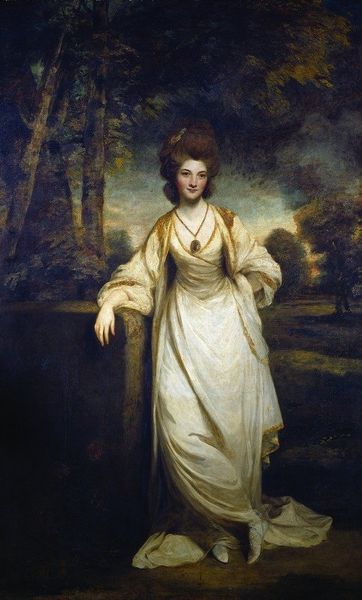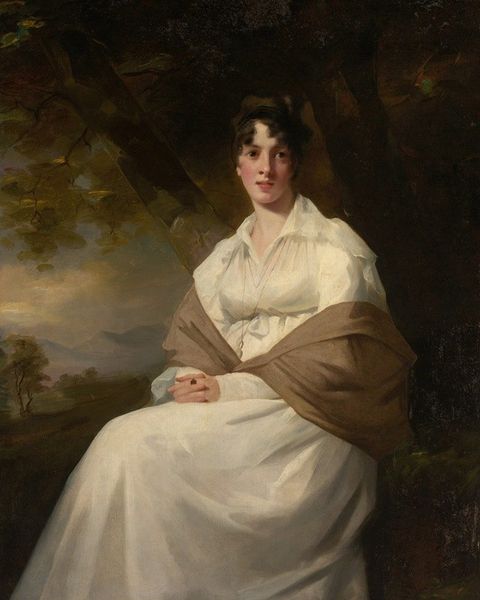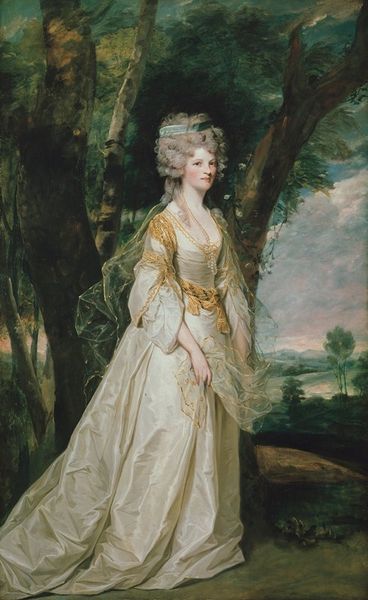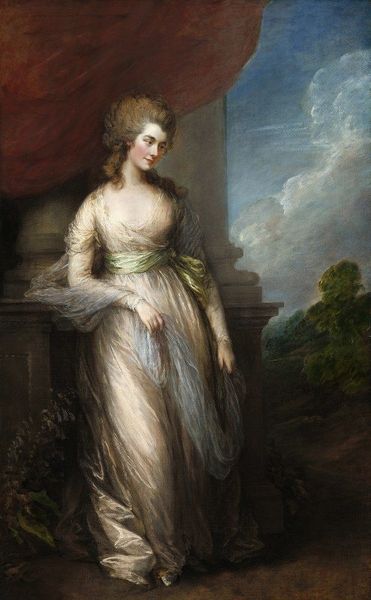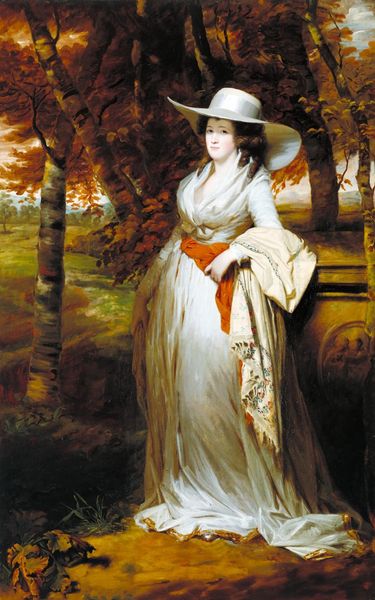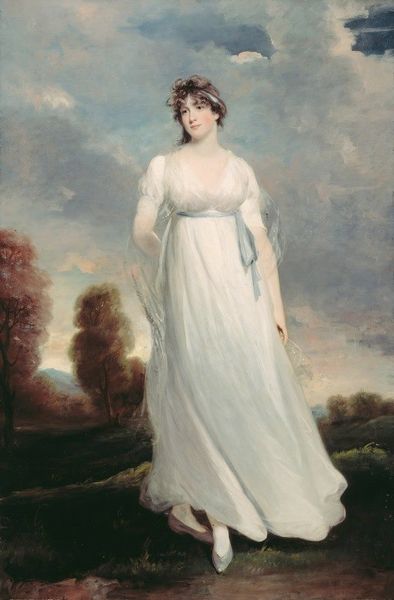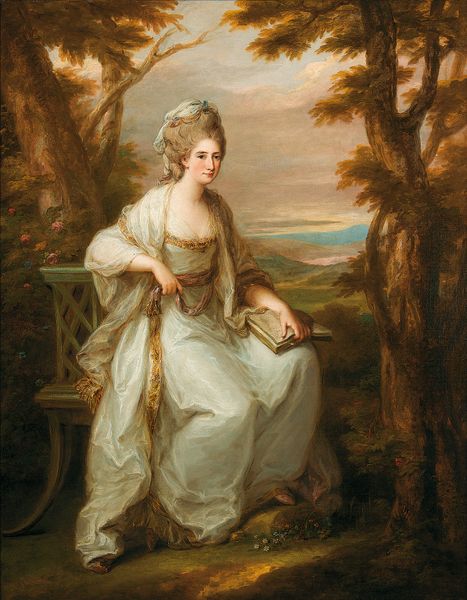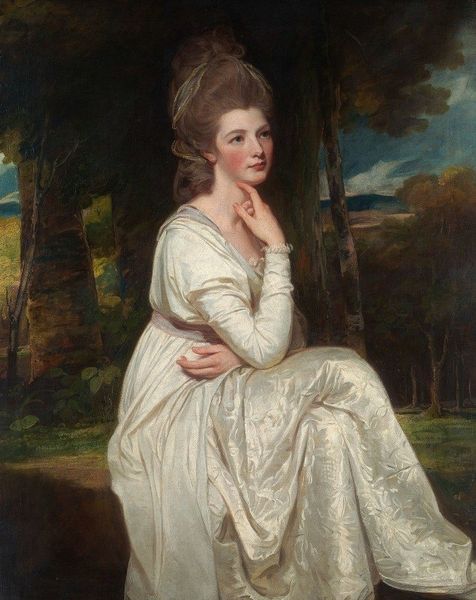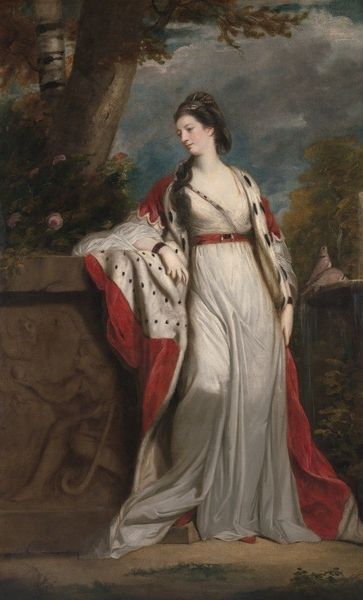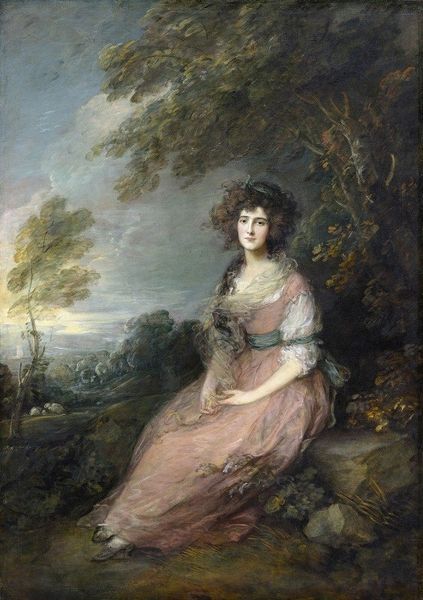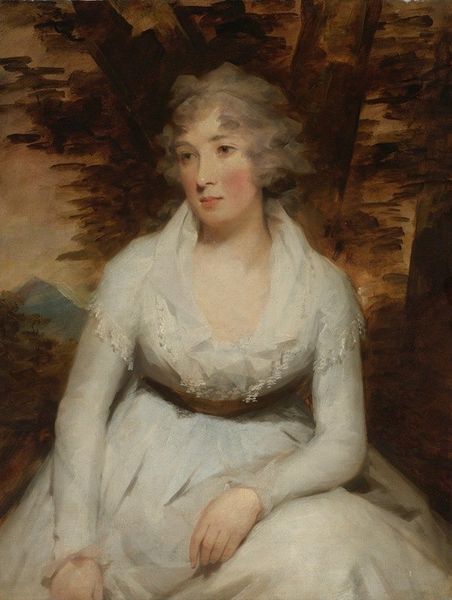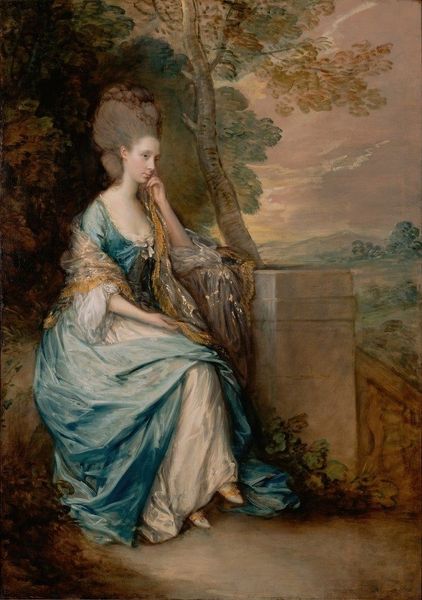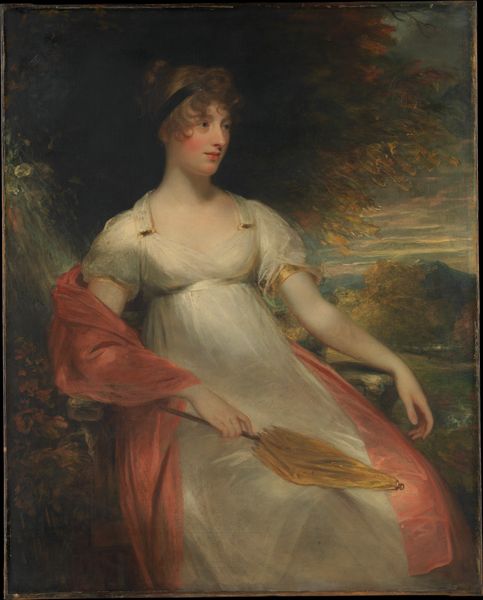
Copyright: Public Domain: Artvee
Curator: Immediately, there’s a striking dreamlike quality, almost ethereal. It reminds me of classical depictions of nymphs and goddesses in enchanted woods. Editor: This is Joshua Reynolds’s portrait, “Mrs. Elizabeth Carnac,” dating from around 1775, executed in oil on canvas. The work embodies a very specific socio-political performance. We are seeing the leisured class projecting itself into the landscape. Curator: The details really underscore that sensibility. Her elaborate coiffure and satin gown...they appear so disconnected from the natural backdrop, creating this beautiful dissonance. Does this strike you as staged? Editor: Absolutely. While presented as an innocent stroll through the woods, the composition deliberately places her in command of this cultivated nature. We see this time and again, the landed gentry literally posing as one with their "natural" domain. The landscape almost becomes another accessory. It begs the question: who really benefits from this idealized vision of rural England? Curator: And yet, there's also the persistent symbolism of nature, even here, perhaps referencing a perceived state of harmony or an idyllic past, which she perhaps yearns for, while burdened with the expectations of her time. Her very posture seems almost to suggest wistfulness. Editor: Perhaps. However, let’s not forget that idyllic imagery often obscures complex realities, particularly concerning wealth and privilege. The artist here seems unconcerned with any suggestion of that. Curator: Indeed, but might we also suggest it encapsulates universal yearning for beauty, regardless of social rank or moment? She does appear to occupy a certain idealized realm—a symbol perhaps, or longing outside the world of mere politics and power. Editor: Perhaps we should also remember we're viewing this image now, centuries removed, layered with our own cultural contexts. To consider the sitter as removed from that very socioeconomic situation is also in itself a sort of construct that we add to this oil on canvas. Curator: Well, whatever truths, distortions, and manipulations are at play here, it's a thought-provoking and, in some ways, a seductive construction, which prompts a conversation even after centuries, of the subject and ourselves. Editor: A reminder that even within seemingly serene aesthetics lies an invitation to analyze the world beyond the frame. A constant exercise of questioning and unearthing is required, not just of what art shows but often what is left out.
Comments
No comments
Be the first to comment and join the conversation on the ultimate creative platform.
